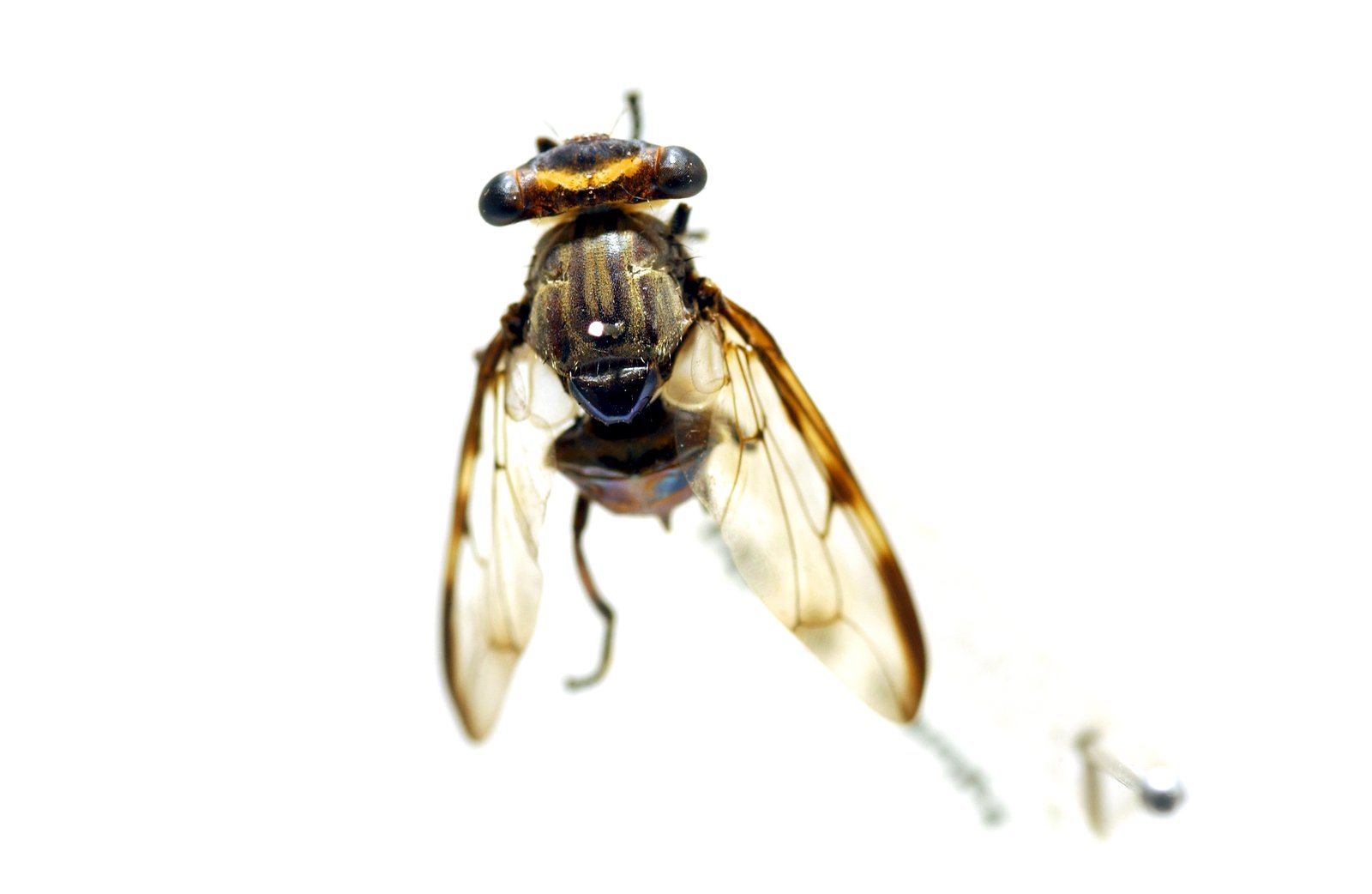Stalk-eyed Signal Flies, Achias spp.

© Australian Museum
Introduction
The signal fly family (Platystomatidae) includes a great diversity of species found in Australia, New Guinea and other nearby tropical countries.
Identification
Small brown flies, males usually with elongated head widths, eyes on the end of stalks, females without.
Scientists working on this family estimate that there may be as many as 900 species of signal fly that occur in the Australasian region.
This group of flies contains some spectacular species including the stalk-eyed signal flies, belonging to the genus Achias. True to their name, the males have eyes on long stalks extending from either side of their heads.
The Australian Museum has the world's largest and most comprehensive collection of signal flies, including examples from 64 different species of stalk-eyed signal fly and a number of unique specimens found in no other museum collection.
Habitat
Male stalk-eyed signal flies spend much of their time in rainforests on shaded tree trunks which they use as courtship territory and avidly defend against rivals.
Distribution
Stalk-eyed signal flies occur mainly in New Guinea (with more than 90 recorded species) and in Queensland (with five recorded species).
Feeding and diet
Mammalian and human faeces and also tree/plant sap.
Other behaviours and adaptations
When fighting face to face, rival males gauge their opponents' size and strength from their head width. Small males (which may have begun life as under-nourished or disadvantaged larvae) have very short or no eye-stalks. The clear difference in head-width allows the weaker fly to back off early and avoid possible injury.
Breeding behaviours
Very little is known about their reproduction.


